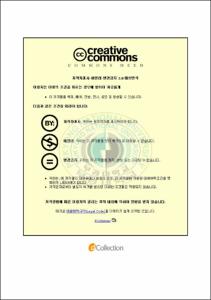유압 펌프의 유량 맥동 계측 및 정밀도 평가에 관한 연구
- Alternative Title
- A Study on Measurement of Hydraulic Pump's Flow Ripple Characteristics and Evaluation of the Test Results
- Abstract
- Pressure ripple in hydraulic systems is a major source of vibration, which can lead to fatigue failure of components and cause air-borne noise. Therefore, in order to reduce vibration levels and produce quieter and more reliable systems, it is important to understand and quantify the fluid-borne noise characteristics of positive displacement pumps.
The fluid-borne noises of hydraulic pumps are charac-terized by the source impedance and the source flow ripple of pump. And these produced by a pump are influenced by the pumping mechanism and the fluid properties, and are, in general, independent of the dynamic characteristics of the circuit to which the pump is connected. These two cha-racteristic values cannot be measured directly, but can be measured by some indirect methods from pressure ripple in pipe line.
Methods for measuring the source impedance and the source flow ripple of pump were proposed by some researchers. One representative method of the proposed methods is the “secondary source” method which has been accepted as an ISO standard(ISO 10767 Part 1).
The ISO 10767 Part 1 consists of the measurement system and test method based on the “secondary source” method. But the basic theory of the “secondary source” method is not described distinctly in the ISO document. So it is very difficult for the industry side engineers to understand the ISO 10767. So this study analyzes theoretically on the source impedance, the source flow ripple of the pump, and pressure ripple of the pipe components. And explains the test process based on the ISO 10767 Part 1.
Firstly, in this study, the characteristics of the hydraulic system were analyzed in frequency domain. And the equations for pressure and flow ripple in the pipe line were rearranged with the transfer matrix method. And then, a mathematical model for measuring the pump’s properties from the pressure ripple in the standard pipe line was proposed by using the hydraulic transfer matrix method. And the theory of the “secondary source” method for measuring the pump’s properties from the mathematical model was explained concretely. As well, the author fabricated a test system based on the "secondary source" method, and conducted pilot tests. The test of the ISO 10767 Part 1 is divided into two steps. At the first step, the equation approximating the source impedance was obtained. And, at the second step, from the pressure ripple obtained by experiments, internal flow ripple and outlet flow ripple of the hydraulic pump were evaluated in frequency domain by numerical calculations. At the same time, a program for computing the flow ripple and internal impedance of hydraulic pumps was developed by using MATLAB.
To confirm the reliability of the calculated results from the dynamic characteristics of the hydraulic pump and pipe line system, the pressure ripple calculated from the pump’s properties was compared with the pressure ripple measured through the ISO 10767 Part 1. In the comparison, comparatively good agreements were obtained by showing the error rates 11.4 %.
As the results of this study, measuring the source impe-dance and the source flow ripple was enabled based on the ISO 10767 Part 1. And it is expected that the results of this study will be utilized by the engineers in the fluid power field in applying the ISO 10767 Part 1 to pump performance tests on flow/pressure ripple characteristics.
- Issued Date
- 2008
- Awarded Date
- 2008. 2
- Type
- Dissertation
- Publisher
- 부경대학교 대학원
- Alternative Author(s)
- Kim, Ji-Woong
- Affiliation
- 부경대학교 대학원
- Department
- 대학원 기계공학부지능기계공학전공
- Advisor
- 이일영
- Table Of Contents
- Abstract = ⅰ
기호설명 = ⅲ
제1장 서론 = 1
1.1 연구의 배경 = 1
1.2 연구의 목적 및 내용 = 2
제2장 2차 맥동원법에 대한 이론 해석 = 3
2.1 유압 펌프 고유치에 대한 기초 방정식 = 3
2.2 2차 맥동원법에 대한 요약 = 8
제3장 2차 맥동원법에 기초한 측정장치 및 측정 방법 = 11
3.1. 2차 맥동원법에 기초한 측정장치 = 11
3.1.1 측정장치의 구성 조건 = 11
3.1.2 측정장치의 제작 = 13
3.2 2차 맥동원법에 기초한 측정 방법 = 15
3.2.1 제1단계 측정 = 15
3.2.2 제2단계 측정 = 16
3.2.3 2차 맥동원법 측정 순서의 요약 = 17
제4장 유압 펌프의 고유치 측정 결과 및 고찰 = 19
4.1 Zs 측정 결과(제1단계 측정 결과) = 19
4.1.1 기본 물리 변수값의 정의 및 연산 프로그램 순서도 = 19
4.1.2 압력 맥동의 시간응답 특성 = 21
4.1.3 주파수 영역에서의 압력 맥동 데이터의 생성 = 22
4.1.4 2차 맥동원의 조화주파수에 해당하는 구하기 = 23
4.1.5 Zs 근사식 구하기 = 34
4.2 Qs 측정 결과(제2단계 측정 결과) = 37
4.2.1 기본 물리 변수값의 정의 및 연산 프로그램 순서도 = 37
4.2.2 압력 맥동의 시간응답 특성 = 38
4.2.3 주파수 영역에서의 압력 맥동 생성 = 39
4.2.4 측정 대상 펌프의 내부 유량 맥동 계산 = 41
4.3 Qs의 신뢰성 검증 = 45
4.3.1 Qs를 이용한 Qo, P3의 계산 = 45
4.3.2 Qs의 신뢰성 검증 = 48
제5장 결론 = 49
부록 A = 50
A.1 = 50
A.1.1 = 50
A.1.2 = 54
A.1.3 = 55
A.2 = 58
A.2.1 = 58
A.2.2 = 59
A.2.3 = 60
참고문헌 = 62
- Degree
- Master
- Appears in Collections:
- 대학원 > 기계공학부-지능기계공학전공
- Files in This Item:
-
-
Download
 유압 펌프의 유량 맥동 계측 및 정밀도 평가에 관한 연구.pdf
기타 데이터 / 2.43 MB / Adobe PDF
유압 펌프의 유량 맥동 계측 및 정밀도 평가에 관한 연구.pdf
기타 데이터 / 2.43 MB / Adobe PDF
-
Items in Repository are protected by copyright, with all rights reserved, unless otherwise indicated.